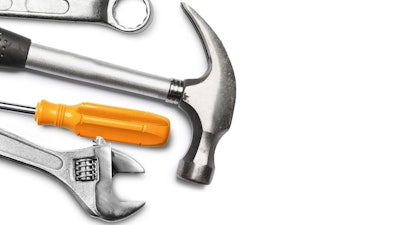
Picture this: On your Sunday morning Costco run, you spot a killer deal on spaghetti sauce, so you spring for the six-pack of half gallon jars. You open one the following weekend, use half of it for your family dinner, and toss the rest knowing you won’t use the balance before it spoils. The five remaining jars, buried in your disorganized pantry, begin to collect dust and before you know it you’re shopping again. And, say, don’t we need spaghetti sauce? Better get some, just in case…
This is how Grainger’s Senior Director of Consulting Services Kevin Hartler describes the domestic parallel to how many in the industrial space are approaching MRO inventory. I spoke with Hartler after hearing a member of his team speak at the Grainger Show this past month in Orlando, an event loaded with consultative presentations, networking and exhibits from Grainger’s top suppliers.
When I first sat down to the “Leveraging Inventory as an Investment” customer session, I was struck by some of the facts that flashed across the screens of the room:
- 59 percent of MRO items are inactive, going unused for a year.
- 60 percent of on-hand inventory levels exceed a one-year supply.
- Less than 5 percent of excess and obsolete inventory will be returned to the supplier.
Grainger has been sounding the alarm for years when it comes to MRO inventory challenges, and it’s really no surprise that many industrial buyers find themselves with the same problems. They have way too many suppliers, too many with purchasing responsibilities, and very little visibility of the MRO inventory they do have. How many of you work in facilities with a tool crib that’s a little (or more than a little) disorganized?
Grainger describes the problem of “critical” spares, and it’s usually related to how well maintenance wants to be prepared. And while that’s certainly understandable, especially to anyone who has ever been part of a catastrophic downtime scenario where they are frantically waiting for a part to be delivered, there are consequences to hoarding backups.
Daniel McLellan, senior manager of consulting services and the speaker in the Grainger presentation, described a scenario where a customer in heavy industry increased its revenue one year by 200 percent, yet was cash flow negative, meaning profit shares came in at a dismal $0. Each division worked to revise procedures to free up cash by improving efficiency, and the materials management division went about changing its mindset on inventory. Some of the things they implemented included shadow boards with tools for each job function, which helped to address the loss that came with workers just grabbing things from a tool crib. They also eliminated a large staging area that was stocked with several years worth of welding supplies, moved key items to carts that went to the point of need, and implemented a Kanban system to help control stock-outs.
Finally, the team integrated electronic replenishment tools with automatic reorder functionality, helping to fuel its usage analysis as well. In the end, the company was able to stabilize cash flow and add 25 percent efficiency back to the supervisors who were previously bogged down with some of these procurement-related tasks.
While Grainger offers its own slate of services for helping customers control inventory – from low scale consulting to orchestrate “mindset” change, all the way up to high tech scanners and vending machines – the great lesson from this anecdote is that change can start small. The first step, it seems, is acknowledging problem areas and establishing a basic plan that identifies which spares are really, actually critical, and then to add visibility at the point of consumption going forward.
The visibility part, and the Costco anecdote, are good motivators to organize your kitchen pantry as well. Because nobody ever buys spaghetti sauce with the plan to blow past the expiration date and throw it in the trash months down the road. It’s just not a good use of your hard-earned money.
Anna Wells is Executive Editor of IEN. This blog first appeared in the March/April print issue.





















